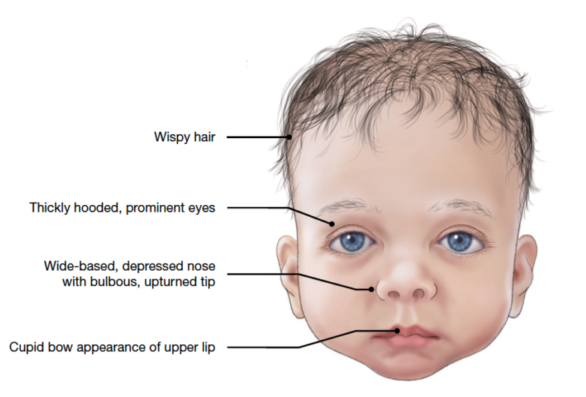Facial features
People with Noonan syndrome have characteristic facial features, particularly during childhood, which change with age and may be insignificant in adult life. In early childhood, ptosis (drooping eyelids), low set ears, short neck, and low hairline are characteristic.
The facial features include:
All ages
- Eyes: May be strikingly blue eyes with arched or diamond-shaped eyebrows
- Ears: Low set, posteriorly rotated, thick helices





